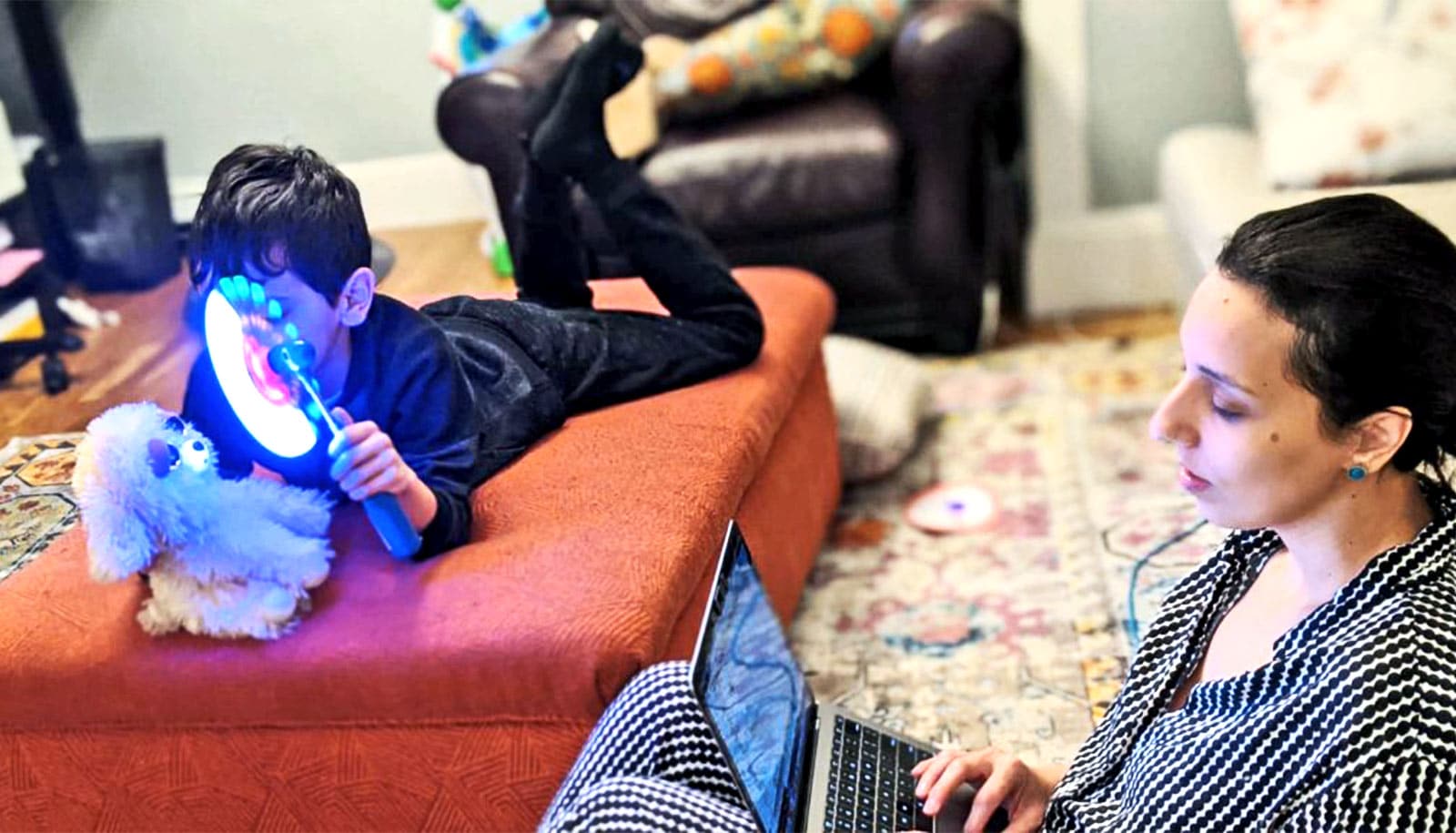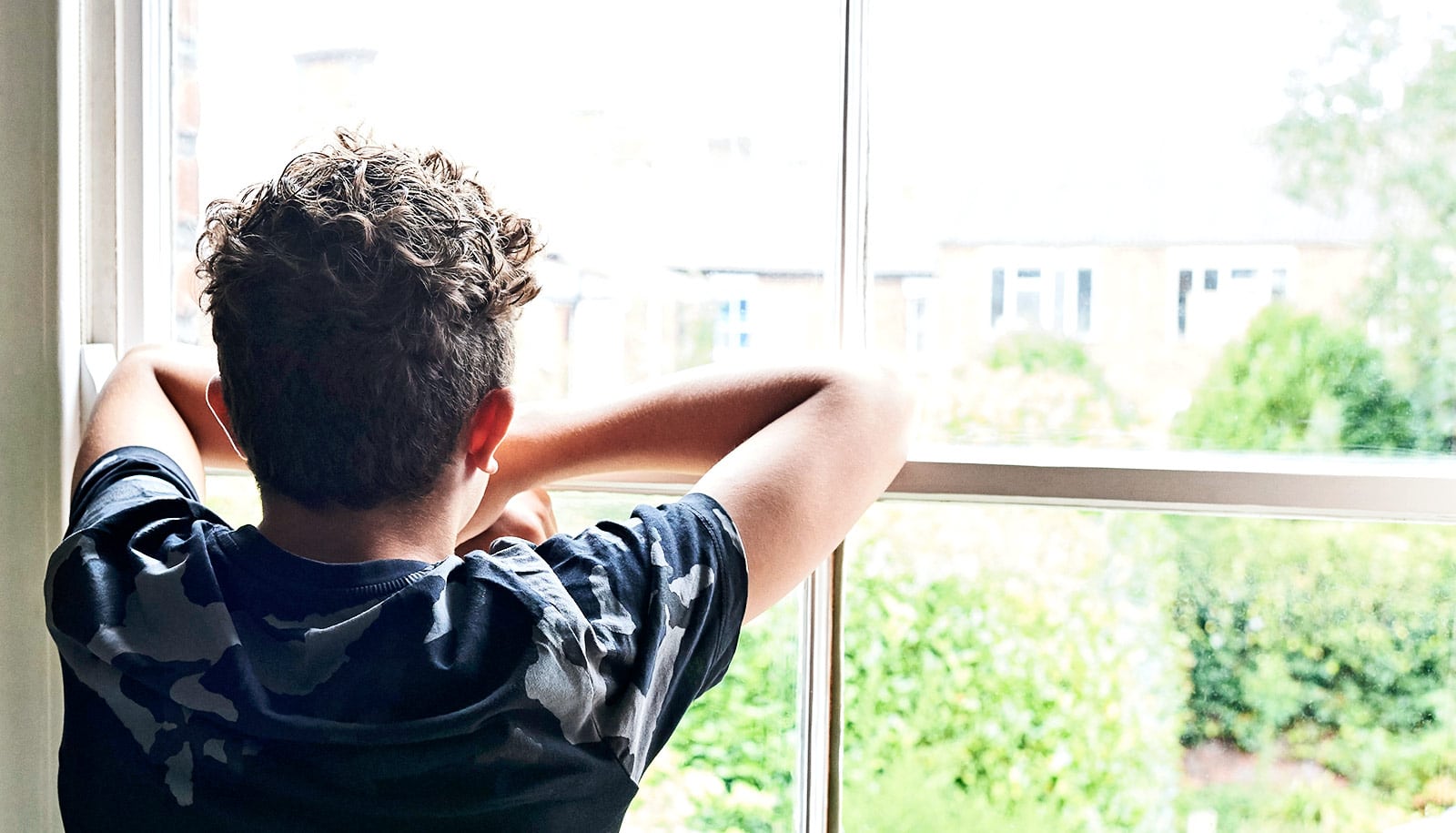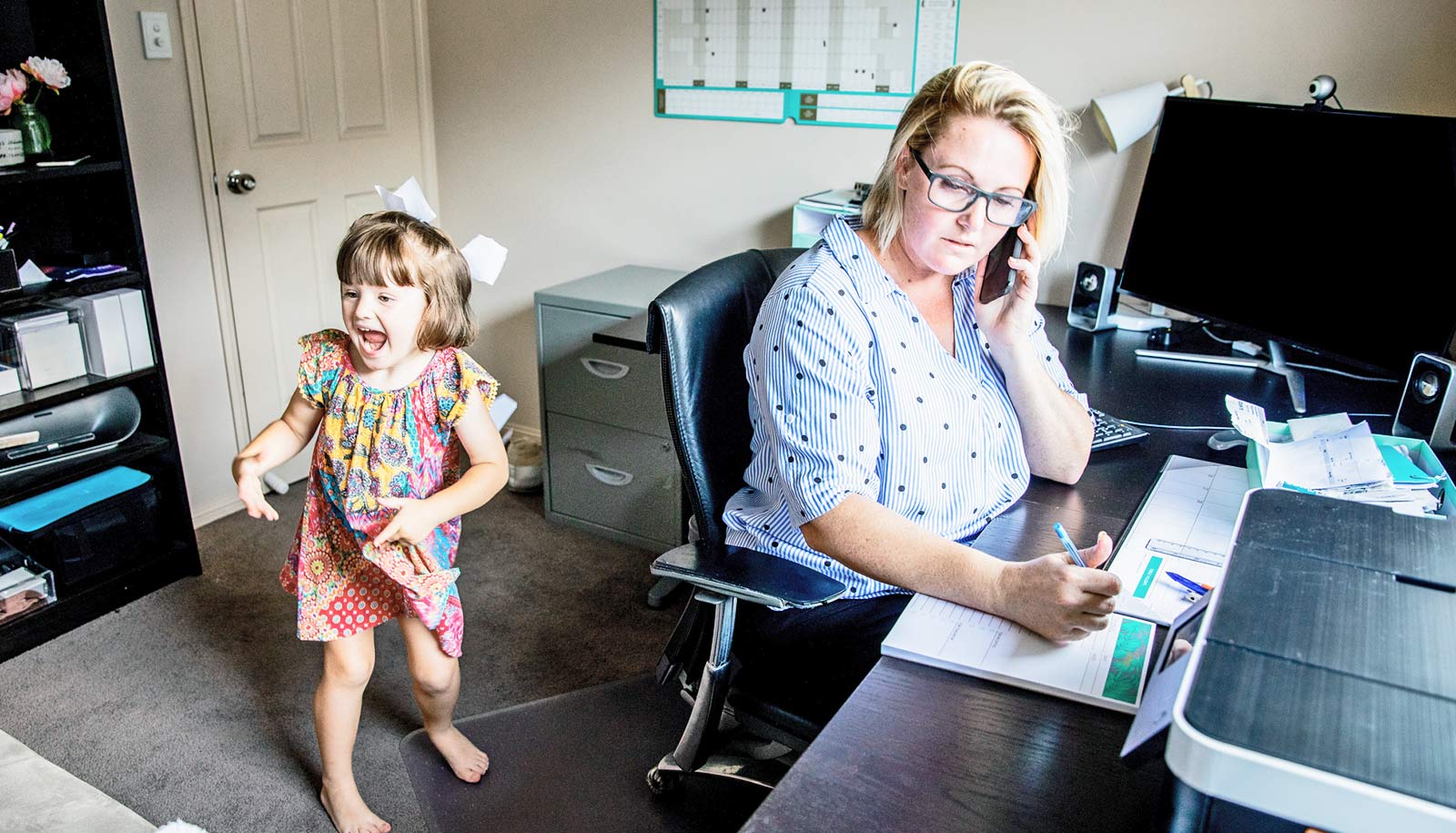The closing of daycare centers and schools has sent parents nationwide into a mad scramble to teach their children at home, often while juggling work obligations remotely.
This is life in the era of COVID-19—and for working parents, it isn’t easy. Or pretty.
For every parent who is taking nature walks or crafting with their child, there’s another who’s muting a screaming child during a Zoom teleconference or has parked their child in front of a TV indefinitely. And it can be a full-time job just wading through the elaborate lesson plans, online curriculum options, or labor-intensive kitchen science experiments that fill social media feeds—never mind undertaking them.
“We as parents have to stop and ask ourselves, what do children need at this time?”
“It’s just not sustainable, and it’s not realistic,” says Nermeen Dashoush, a clinical assistant professor of early childhood education at the Wheelock College of Education & Human Development at Boston University. She says it’s time for parents to manage their expectations when it comes to homeschooling in this unprecedented time.
“We as parents have to stop and ask ourselves, what do children need at this time?” Dashoush says. “It’s a sense of reassurance, a sense of understanding what’s going on around them.”
Here, Dashoush and two other early childhood educators share what they’re doing with their own children. They are the experts who teach the teachers while juggling the educational needs of their children, and their strategies are surprising—and empowering.
Tip #1: Play is important
Megina Baker says she’s not expecting her seven-year-old to complete the same quantity of work she had in school, but she wants to keep her engaged. Same goes for her four-year-old. So the lecturer, whose professional expertise is in the importance of play and inquiry-based learning, says she’s created a weekly schedule that gives their days some structure, but that’s not too restrictive.
“Play is an incredible stress reducer for children,” Baker says. “Especially when there’s an adult there, being fully available. Make sure you put down your phone.”
That means their schedule allocates for her son’s virtual “circle time” with his preschool classmates. There’s also “play school” time for the kids, when they choose from learning activities (including first-grade district-provided materials). In between, there’s a lot of open space for both children and parents to choose activities.
“Yesterday, my son wanted Legos, my daughter wanted to write a story, and I wanted a walk in the woods,” she says.
As she says this, her children are having a loud disagreement. Baker chuckles.
“This is going to make the need for quality childcare, really, really clear,” she says.
The act of balancing work and parenting is a dilemma for privileged families, she says, noting the many families that are facing economic uncertainty and stress due to furloughs or layoffs and wondering what will happen when the bills come due. The crisis is especially stressful for parents of children with special needs, who find changes to the typical routine especially challenging.
Be in the moment with your children, whenever possible, Baker advises.
“It can actually be very therapeutic,” she says. “You can say things like, right now and for the next hour, I am just going to be with my children. Or you can say to your children, ‘I have to work right now.’ But either way, being clear with them is helpful.
“But don’t try to do too much. I think this is a ‘less is more’ moment.”
Recommendation: Play does not have to be difficult or complicated, Baker says, and it decreases stress in children. For ideas, she uses the Beautiful Stuff Project.
Tip #2: Keep routines flexible
Eve Manz, an assistant professor of education, specializing in science, works with teachers and pre-teachers to design curricula and new ways to engage students in science. She is also at home with her husband, who is working remotely, and two children, ages four and seven.
Classroom elementary school teachers, she says, typically spend the first six weeks of the school year building routines with their students. They start with routines, she says, not simply academics, because they’re building relationships with the students.
Parents and kids now working and learning at home can benefit from this approach. Give your kids less demanding tasks to start, Manz says, and observe them as they engage in tasks. Remember that what a good education does at its best is help build autonomy, a sense of belonging, and confidence in a child.
“Humans have been learning in families a lot longer than they’ve been learning in schools. Think of this time as, what do I want my children to learn and what do I want to learn about them?” she says. “Think about setting up a learning environment where the first thing is observing and listening so that you can make adjustments based on what you are noticing.”
Manz has created a loose daily schedule in conjunction with her husband and children, a process that was itself instructional. It included small blocks of academic time and larger chunks of choice time, when her children got to pick an activity. Everyone reviewed the schedule’s effectiveness together, too, to see what worked well and what was problematic.
Her seven-year-old asked for more snack and recess time, and got it. Her four-year-old seemed cranky and needy much of the week, she says, and is happiest contributing to household activities like cooking or sweeping or showing what she can do for herself, like peeling carrots or riding her bike.
“So I’m asking myself about that,” Manz says. “I’m looking for things she can do on her own that she gets a sense of pride from.”
Manz also needs her own space to work, as well as time off from the dual challenge of working a job and helping her children learn. She says that’s one reason her children’s schedule is not designed to mimic school, which has its own structure, rigor, and social network. That kind of learning environment can’t be quickly recreated by suddenly housebound families—and trying to do so can make families anxious.
“Learning occurs,” she says, “when people are not totally comfortable, but also when they are ready, confident, cared for, and know what’s coming.”
Recommendation: Manz uses the free mathematics website Investigations3 with her children because it offers high-quality, inquiry-based activities arranged by grade level.
Tip #3: Boredom is OK
Nermeen Dashoush, a clinical assistant professor of early childhood education, recently published a work on Medium offering her advice to parents. It’s called, “Home with Kids? It’s OK to Do Nothing.”
“My inbox and text messages have been flooded with questions from parents asking for online tools and home activities,” Dashoush writes. “My newsfeed is full of parents sharing their schedules and activities they are doing at home. All of those activities are just fine, but sometimes nothing is just fine too.”
“…doing nothing and having empty space is good for your child. And you.”
Dashoush is not only an educator to educators, she is a consultant to children’s digital media companies, as well as the parent of a seven-year-old and a nine-month-old.
“I’m exhausted,” she says, and she has her own set of coping strategies. Key among them is the idea that it’s okay for kids to be bored.
“It’s setting them up for reality, for life,” she says.
Parents are also not trained as teachers, and can be a little too close emotionally to their charges to be objective about the learning process. Doctors typically don’t treat their own children for this very reason, Dashoush says.
Dashoush views often complex parent-created schedules and timetables as a manifestation of the fear and anxiety that coronavirus has unleashed. While some scheduling and structure can be reassuring for children and parents alike, she wants parents to be realistic about what they can and cannot do now and when life returns to normal.
“Snack time does not have to be from 11 to 11:15 AM,” she says. “And we have to lift the burden off parents to feel like they have to engage their child 24 hours a day. It’s unreasonable.”
So what if your child wants to watch TV all day? Dashoush has no limits on screen time in her house. The question, she says, is what activities is the screen time taking them away from? TV-addicted children might not know how to fill their time with something else. Guide them by putting out some toys or activities and paying attention to what interests them.
Give them space and time, she says. Parents may want to consider investing in camera technology to keep an eye on their children while they work.
“There are a lot of great resources out there,” Dashoush says, noting that parents have many options at their fingertips. “But doing nothing and having empty space is good for your child. And you.”
Recommendation: Dashoush created the MarcoPolo Learning app, and also likes the Epic! reading app (a library of 35,000 books for ages 12 and under).
Source: Boston University



